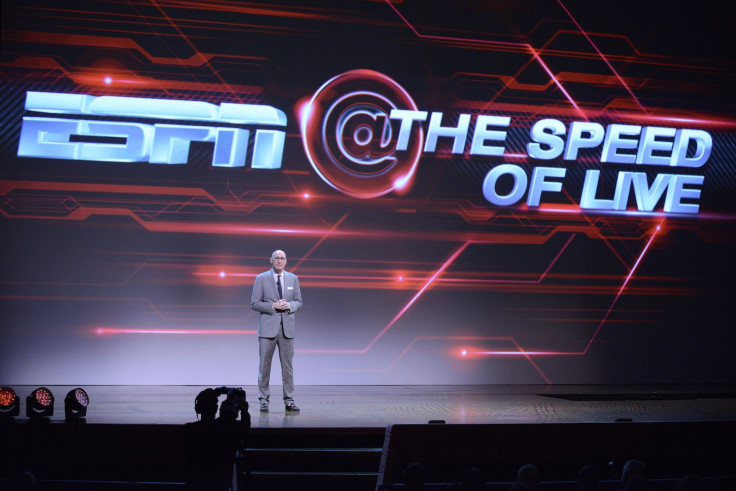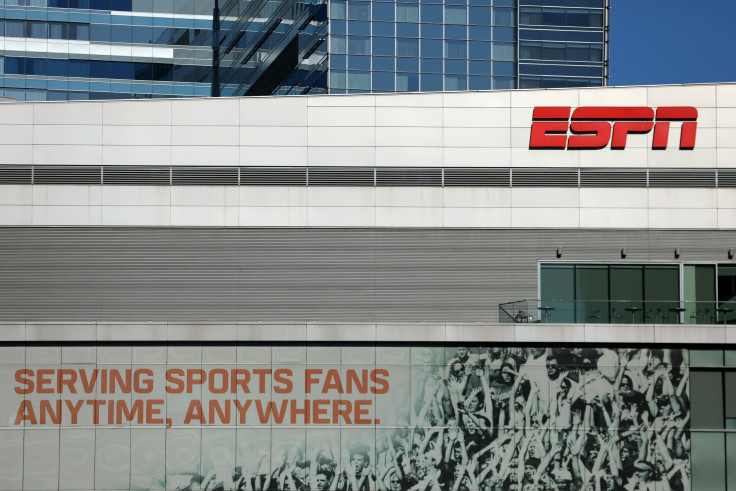ESPN Layoffs: Why Cord-Cutting Is To Blame, Why The Trend Will Continue

Earlier this week, the sports media space reeled from the news that ESPN is laying off an estimated 100 employees. This week’s layoffs weren’t the first for ESPN, but still affected a deep bench of on-air and online employees, including personalities like Trent Dilfer and staffers like NBA guru Marc Stein.
While certain corners of the industry pinned the news on ESPN’s perceived political leanings, the real reason for ESPN’s layoffs is less salacious, but shows the bleak problems that channels like ESPN will increasingly have to figure out how to buck. You can blame cord-cutting.
In the past few years, ESPN’s seen a steady decline in subscriber numbers as more people choose to hop to skinny cable bundles or cut the cord entirely. Since 2010, ESPN’s subscriber base has dropped from around 100 million subscribers to an estimated 87 million subscribers this year. At the same time, this decline has also come on the heels of massive spending from ESPN to lock down flagship live programming — the network’s recent rights acquisitions and renewals include the College Football Playoff (at an estimated $5.64 billion), the NFL (at $1.9 billion annually) and Wimbledon ( $500 million).
Read: Twitter Reacts To List Of Employees Dismissed By ESPN
Although ESPN’s been aware of this trend for a while, last Wednesday’s news amounted to the other shoe dropping. The company has made moves to adjust to this new climate for cable networks: ESPN execs had once dismissed the prospect of alternative or skinny cable packages, but now, channels from the ESPN are a common offering on streaming cable services like YouTube TV, PlayStation Vue and DirecTV Now.

In a statement, ESPN president John Skipper said that changing industry trends forced the network to make these cuts:
“Dynamic change demands an increased focus on versatility and value, and as a result, we have been engaged in the challenging process of determining the talent—anchors, analysts, reporters, writers and those who handle play-by-play—necessary to meet those demands.” Skipper said.
At networks like ESPN, though, the hardest part of this week’s layoffs isn’t the fact that ESPN needed to do them: rather, it’s about what happens next.

With the increased popularity of alternative cable package options and streaming, cable subscribers who don’t want channels like ESPN no longer have to subsidize them via their bill. In a poll from research firm MoffettNathanson, more than 56 percent of respondents said they’d be willing to drop ESPN or ESPN2 from their channel package if they could save $8 from their monthly bill.
Read: ESPN Does Poorly On A La Carte Network Choices In Survey
The number of cable subscribers who’d want to do so isn’t going down anytime soon, either. According to analyst firm Convergence Research Group, an estimated 30.3 million households will become cord cutters in 2017, continuing a steady increase in cord cutters that’s emerged since 2010.
This trend hasn’t gone unnoticed by tech companies: Amazon will pay $50 million to stream a handful of NFL games this season, beating out prior online rightsholder Twitter. For providers like Amazon and PlayStation, the benefits to getting into the content provider game are appealing: they don’t have to pad out their catalog with providers they don’t want and can tailor their offerings to attract potential subscribers.
And while this week’s events has numerous implications for ESPN, they’re far more seismic for other cable networks. As more cable providers and subscribers look for alternative and cheaper packages, they’ve found a willing partner in tech companies seeking content for their own networks. Networks like ESPN aren’t in any danger of going extinct any time soon, but with cord cutting on the rise, one thing looks to be certain: in a media landscape where subscribers aren’t simply a captive audience, channels are going to look and run far differently than they did before.
© Copyright IBTimes 2025. All rights reserved.



















